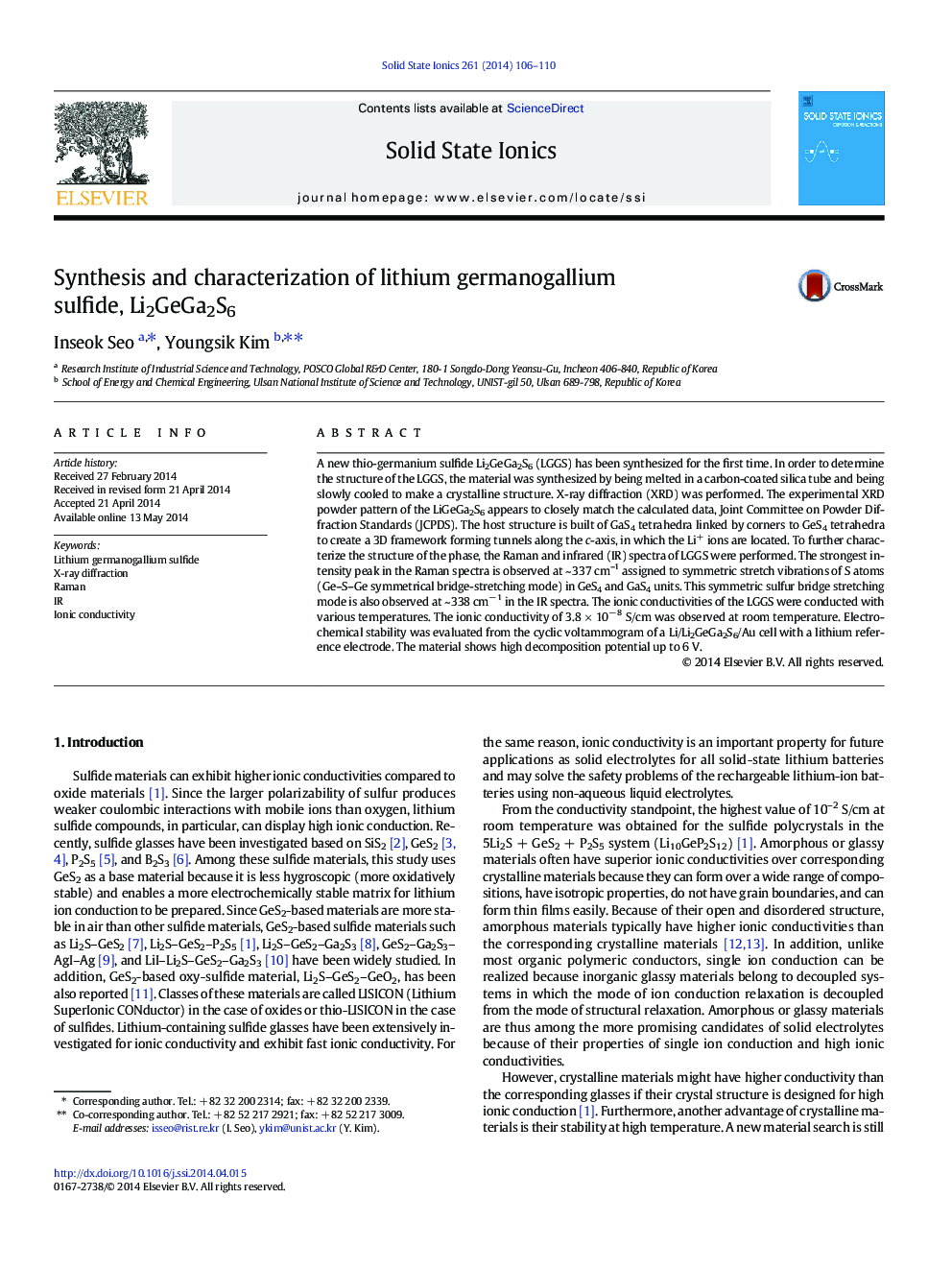| Article ID | Journal | Published Year | Pages | File Type |
|---|---|---|---|---|
| 1295870 | Solid State Ionics | 2014 | 5 Pages |
•Crystalline Li2S-GeS2-Ga2S3 was synthesized by melting in a carbon coated silica tube.•The experimental XRD pattern of the LiGeGa2S6 appears to closely match the calculated data.•The host structure is built of GaS4 tetrahedra linkd by coners to GeS4 tetrahedra to create a 3D framework forming tunnels along the c axis.
A new thio-germanium sulfide Li2GeGa2S6 (LGGS) has been synthesized for the first time. In order to determine the structure of the LGGS, the material was synthesized by being melted in a carbon-coated silica tube and being slowly cooled to make a crystalline structure. X-ray diffraction (XRD) was performed. The experimental XRD powder pattern of the LiGeGa2S6 appears to closely match the calculated data, Joint Committee on Powder Diffraction Standards (JCPDS). The host structure is built of GaS4 tetrahedra linked by corners to GeS4 tetrahedra to create a 3D framework forming tunnels along the c-axis, in which the Li+ ions are located. To further characterize the structure of the phase, the Raman and infrared (IR) spectra of LGGS were performed. The strongest intensity peak in the Raman spectra is observed at ~ 337 cm–1 assigned to symmetric stretch vibrations of S atoms (Ge–S–Ge symmetrical bridge-stretching mode) in GeS4 and GaS4 units. This symmetric sulfur bridge stretching mode is also observed at ~ 338 cm− 1 in the IR spectra. The ionic conductivities of the LGGS were conducted with various temperatures. The ionic conductivity of 3.8 × 10− 8 S/cm was observed at room temperature. Electrochemical stability was evaluated from the cyclic voltammogram of a Li/Li2GeGa2S6/Au cell with a lithium reference electrode. The material shows high decomposition potential up to 6 V.
